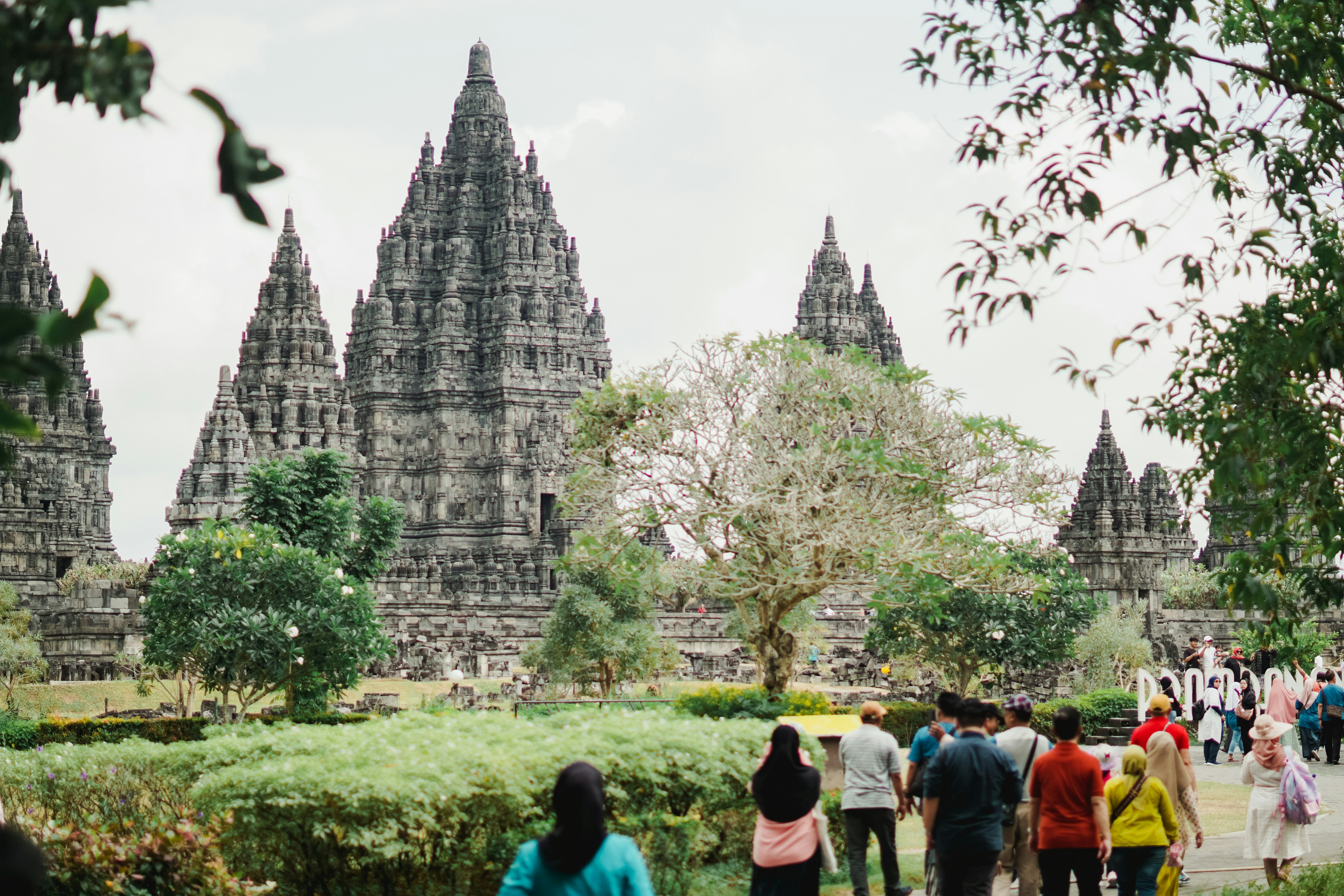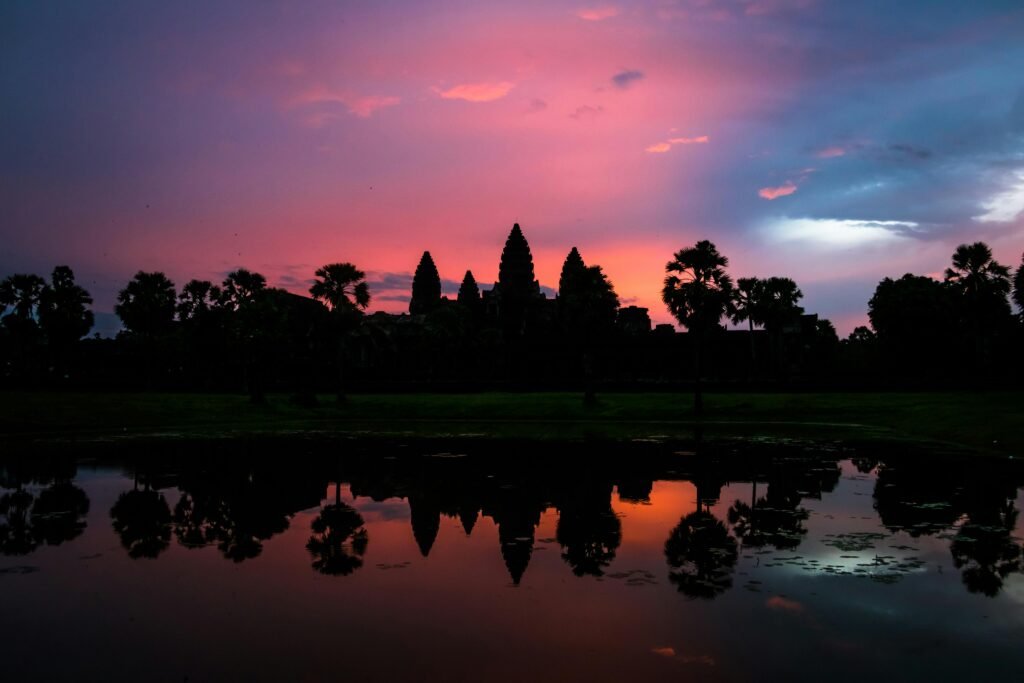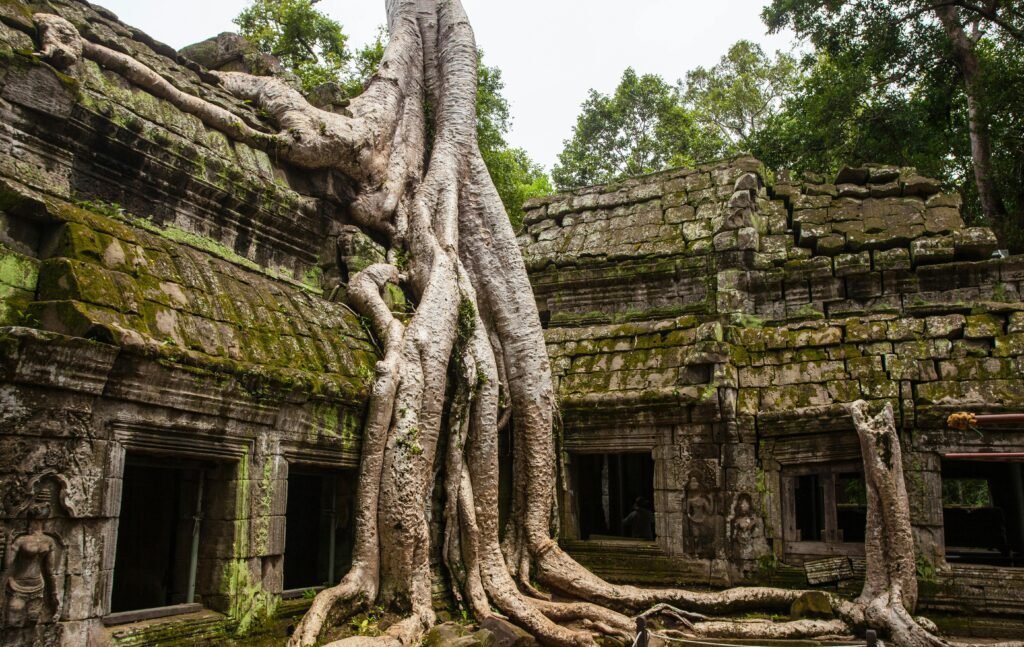Introduction to the Hidden Temples

Southeast Asia is a region rich in cultural heritage and spiritual significance, home to a myriad of temples that reflect the area’s diverse history and beliefs. While many travelers are drawn to the grandiosity of well-known sites such as Angkor Wat in Cambodia or the Shwedagon Pagoda in Myanmar, there exists a wealth of hidden temples that remain largely undiscovered and uncelebrated. These lesser-known sacred sites offer a unique glimpse into the spiritual fabric that weaves together various communities in Cambodia, Myanmar, and Laos.
The allure of hidden temples lies in their tranquility and the sense of discovery they provide to intrepid travelers. Unlike crowded tourist hotspots, these sacred locations often boast serene landscapes and fewer visitors, allowing for a more intimate experience. As you journey through the lush jungles of Cambodia, the rolling hills of Laos, or the mystical landscapes of Myanmar, you will encounter remarkable temples that are steeped in history and local lore, evoking a sense of wonder and reverence.
In countries such as Cambodia, the lesser-known temples often reflect the profound influence of ancient Khmer culture, showcasing stunning carvings and architectures that tell stories of a bygone era. Meanwhile, Myanmar is home to hidden gems that mirror the country’s diverse ethnicities and traditions, often juxtaposed against the stunning backdrop of rural scenery. Laos, too, offers its own share of lesser-known treasures, where centuries-old Buddhist temples nestle in serene valleys and atop rugged hills, providing both spiritual solace and visual splendor.
As we delve into this exploration, we invite you to join us in uncovering the enchanting beauty and historical significance of these hidden temples. Together, we will embark on a journey through the intriguing treasures of Cambodia, Myanmar, and Laos, appreciating their place within the broader tapestry of Southeast Asia’s spiritual and cultural landscape.
Cambodia’s Overlooked Marvels
Cambodia is often synonymous with the awe-inspiring Angkor Wat; however, the country is home to numerous lesser-known temples that equally embody beauty and historical significance. Among these hidden gems are Banteay Chhmar and Preah Vihear, two remarkable sites that offer not only architectural grandeur but also a rich tapestry of myths and legends. Banteay Chhmar, located in the northwestern region of Cambodia, is renowned for its stunning intricate bas-reliefs and massive stone walls that hint at its bygone glory. Built during the reign of King Jayavaraman VII in the 12th century, this temple complex is rich in spirituality and history, making it a vital piece of the Khmer Empire’s legacy.
Conversely, Preah Vihear stands on a cliff in the Dângrêk Mountains, providing breathtaking views and a unique architectural style that differs from the more recognized Angkor temples. Recognized as a UNESCO World Heritage site, Preah Vihear is notable for its series of sanctuaries linked by a system of pavements and staircases, which embody a distinct temple layout that blends harmoniously with the surrounding environment. The temple’s construction is steeped in legends, particularly its association with the Hindu deity Shiva, adding a spiritual layer to its already compelling architecture.
The relatively untouched status of these temples not only enhances their allure for travelers seeking solitude but also presents an opportunity for deeper engagement with Cambodian heritage. Visiting these lesser-known treasures allows one to appreciate the intricate artistry and cultural significance of Khmer architecture, as well as immerse oneself in history without the overwhelming crowds often found at more popular sites. Ultimately, Banteay Chhmar and Preah Vihear serve as essential highlights for those attuned to the historical richness and beauty of Cambodia beyond Angkor Wat.
Myanmar’s Hidden Gems

Myanmar, a nation steeped in rich cultural heritage and history, is replete with hidden temple treasures that remain largely undiscovered by tourists. Among these, the temples of Mrauk U stand out as remarkable relics of the country’s ancient civilization. Located in the Rakhine State, Mrauk U was once the capital of the Arakan Kingdom and is home to over 700 temples and pagodas, many of which are adorned with intricate stone carvings and mystical reliefs. The site is often overshadowed by the more famous Bagan, yet it offers an enchanting atmosphere slowly being embraced by travelers seeking an authentic experience away from the bustling crowds.
Bagan, known for its breathtaking vistas of thousands of temples dotting the landscape, does have its lesser-known areas that deserve exploration. While the majority of visitors flock to the popular Ananda Temple and Shwezigon Pagoda, the temples located in the outskirts, such as the lonely but beautiful Nandamannya and the panoramic view from the top of Dhammayangyi, offer a peaceful retreat into the history of Myanmar. Each of these lesser-known temples is enriched with stories and legends that echo the legacies of the ancient kingdoms that once thrived in this region.
Despite the ongoing rise in tourism throughout Myanmar, numerous hidden gems continue to maintain their tranquility. The challenges faced by other landmarks, often overwhelmed by tourist footprints, compel many travelers to seek solace in these quieter temples. The serene landscapes surrounding Mrauk U and the unexplored corners of Bagan embody the spirit of Myanmar, allowing visitors to connect with the local culture and history more intimately. Engaging with these sites not only supports the preservation of cultural heritage but fosters sustainable tourism practices, ensuring these hidden treasures remain unspoiled for future generations.
Laos’ Spiritual Sanctuaries
Laos boasts a rich tapestry of cultural heritage, prominently displayed through its stunning temples. Among the most significant are That Luang and Wat Phu, each offering unique insights into the spiritual life and architectural ingenuity of the region. That Luang, located in the capital, Vientiane, is a national symbol and an essential site for Buddhist pilgrimage. Its imposing stupa, gilded and towering, captures the essence of Laotian religious architecture and is surrounded by meticulously maintained gardens that enhance its serene environment.
In contrast, Wat Phu, situated at the base of Phu Kao Mountain, is an ancient Khmer temple that reflects the rich history and cultural interchange that characterized the region during the Angkor period. The temple’s layout is characterized by a series of sandstone structures that extend from the base of the mountain to the summit, providing breathtaking views of the surrounding countryside. The architectural features at Wat Phu highlight intricate carvings and symbolic motifs that illustrate the spirituality and artistry of the time, making it a UNESCO World Heritage Site and a vital part of Laotian identity.
These temples are more than mere structures; they serve as vibrant venues for traditional ceremonies and festivals that reflect the ongoing cultural practices of Laos. Local communities gather during significant events, such as the Boun Ok Phansa and Boun That Luang, celebrating the end of the Buddhist Lent and honoring the sacred stupa respectively. These gatherings foster a deep sense of communal identity and illustrate the integral role of these spiritual sanctuaries in the social fabric of Laos. Such events not only reinforce religious beliefs but also preserve and promote cultural traditions for future generations.
Comparison with Angkor Wat
Angkor Wat, renowned for its grandeur and scale, is often the centerpiece of any Cambodian itinerary. However, visiting the hidden temples of Cambodia, Myanmar, and Laos offers a contrasting experience that highlights the architectural diversity and historical richness of these regions. While Angkor Wat features a distinct Khmer architectural style characterized by intricate carvings and monumental scale, lesser-known temples such as Ta Prohm, Banteay Chhmar, or the temples of Bagan showcase unique structural elements and artistic representation that reflect the cultural heritage of their respective eras.

The visitor experience in these hidden gems diverges significantly from that at Angkor Wat. Angkor Wat attracts millions of tourists annually, leading to crowded areas that can dilute the appreciation of the site’s details. In contrast, exploring hidden temples often provides a sense of serenity and intimacy, allowing visitors to engage more personally with the surroundings. For example, temples such as the remote Wat Phu in Laos and the lesser-visited temples in Myanmar like Thatbyinnyu offer visitors the opportunity to witness stunning architecture devoid of large tourist crowds, encouraging deeper reflection and connection with the site.
Moreover, the historical significance of these hidden temples often tells stories that differ from those emphasized at Angkor Wat. Many lesser-known sites embody local legends, unique religious practices, and historical events that shaped their communities. These narratives can enrich the traveling experience and provide insights into the cultural identities of their regions. In this light, the hidden temples of Southeast Asia not only stand as less well-known alternatives but also as vital components in understanding the broader historical tapestry of the region. Their architectural charm and the tranquil environments they foster warrant attention and preservation beyond the shadows of their more illustrious neighbor, Angkor Wat.
Preservation Efforts and Challenges
The hidden temples of Southeast Asia, particularly those in Cambodia, Myanmar, and Laos, are testaments to the rich cultural history and architectural ingenuity of the region. However, these invaluable sites face numerous threats that necessitate effective preservation strategies. Local governments are increasingly recognizing the importance of safeguarding these treasures, forming partnerships with international organizations like UNESCO and NGOs dedicated to cultural heritage conservation. These collaborations aim to implement preservation techniques, ensuring that the structural integrity and historical significance of the temples are maintained.
One of the prominent strategies employed is the establishment of site management plans that not only focus on the physical aspects of the temples but also consider educational programs that elevate community awareness about the importance of their cultural heritage. Such initiatives foster local ownership of the sites, urging resident populations to actively participate in the preservation processes. Furthermore, community-based tourism models promote responsible tourism practices, helping to mitigate the adverse impacts of visitation while generating revenue that can be reinvested into conservation efforts.
However, the challenges that accompany these preservation efforts are significant. Increasing tourism, climate change, and natural disasters pose ongoing threats to the integrity of these temples. The balance between tourism development and the preservation of cultural heritage remains a contentious issue, as the influx of visitors can strain local resources and lead to environmental degradation. Additionally, many hidden temples are located in remote areas, making access and adequate funding for restoration efforts more challenging. Despite these obstacles, the collaborative efforts between various stakeholders—including local communities, governments, and international bodies—play a crucial role in promoting sustainable practices that protect these lesser-known gems for future generations.
Cultural Significance of Hidden Temples
The hidden temples of Southeast Asia hold profound cultural and spiritual significance for the communities that surround them. These lesser-known sites, often overshadowed by their more prominent counterparts, serve as vital centers for local rituals and traditions. They are not merely remnants of a bygone era; rather, they continue to be actively integrated into the daily lives of the local populace. Rituals conducted at these temples invite community members to gather and partake in age-old customs that reflect their cultural heritage.

In local folklore, many of these temples are associated with revered myths and legends,-rich narratives that reinforce communal bonds. Each temple often has its own unique story, revealing myths about the deities that are worshiped there or the historical events that led to its construction. Such narratives not only preserve the community’s heritage but also serve as educational touchstones for future generations. The oral traditions associated with these hidden temples create a living history that connects past and present, shaping the cultural identity of the locality.
Furthermore, the local spirituality evident in these hidden temples contrasts starkly with the commercial, global tourist attractions that dominate the region. While larger sites may attract significant revenue, they often lead to the commodification of culture, distancing the rituals from their original significance. In contrast, the hidden temples foster a more intimate connection to the community’s spiritual life, allowing them to thrive on the personal and communal levels. They represent a unique facet of Southeast Asia’s rich tapestry of beliefs and traditions, enabling deeper engagement in cultural practices that transcend mere tourism. Thus, it is essential to appreciate and respect these hidden gems for their invaluable contributions to local identities and spiritual experiences.
Travel Tips for Visiting These Hidden Temples
Exploring the hidden temples of Southeast Asia, particularly in Cambodia, Myanmar, and Laos, requires preparation and respect for the local culture. First and foremost, consider how to access these off-the-beaten-path sites. Many of these temples are located in rural areas, making transportation planning essential. Renting a motorbike or hiring a local driver can provide greater access to secluded locations. Alternatively, engaging a local tour operator can enhance the experience while ensuring that transportation is safely managed.
The timing of your visit is equally important. The dry season, typically from November to March, offers the most comfortable climate for exploration, as the temperature and humidity are generally lower. However, visiting during the shoulder seasons can provide a quieter experience, allowing you to appreciate the temples without large crowds. Be aware of local festivals, which can offer unique insights into cultural practices but may also lead to increased tourist traffic.
Cultural etiquette is crucial when visiting sacred sites. Dress modestly, covering shoulders and knees, to show respect for local customs. Always seek permission before taking photographs, especially of locals or during rituals. Additionally, consider engaging a reputable local guide who can offer insights into the historical significance and cultural context of the temples. Not only does this support the local economy, it also enhances your understanding of the sites. Guides can illuminate the architecture, share legends, and highlight lesser-known stories tied to these ancient landmarks.
The hidden temples of Southeast Asia are treasures waiting to be discovered. By respecting local customs and preparing thoughtfully for your adventure, you can ensure a rewarding experience that celebrates both the history and the people of these remarkable locations.
Conclusion and Call to Adventure
In reflecting upon the remarkable hidden temples found throughout Southeast Asia, it becomes evident that regions such as Cambodia, Myanmar, and Laos offer an abundance of treasures waiting to be discovered. These lesser-known sites stand in contrast to their more famous counterparts, yet they possess an undeniable charm and historical significance that invites further exploration. The intricate architecture, lush landscapes, and rich cultural heritage encapsulated within these temples provide a unique perspective on the region’s storied past.
Visitors to Southeast Asia are often drawn to the more widely recognized landmarks, such as Angkor Wat in Cambodia or the Shwedagon Pagoda in Myanmar. However, the allure of exploring the hidden temples offers a refreshing alternative for those willing to venture off the beaten path. Each temple presents an opportunity to delve into the narratives that shaped the civilizations of this vibrant part of the world, presenting not only visual splendor but also spiritual resonance.
Emphasizing the importance of responsible tourism is also crucial as travelers seek out these remarkable sites. Engaging with local communities, respecting cultural traditions, and supporting conservation efforts ensures that these hidden gems remain intact for future generations to appreciate. By immersing oneself in the wonders of Southeast Asia, travelers foster a deeper connection to the land and its people, enriching their journey through shared stories and memorable interactions.
Ultimately, the hidden temples of Southeast Asia beckon intrepid adventurers to uncover their secrets. By embracing the opportunities that lie beyond the popular tourist destinations, individuals can cultivate a genuine appreciation for the rich tapestry of history and culture that defines this enchanting region. Whether through trekking, cultural exchanges, or simply pausing to admire the artistry within these temple walls, a grand adventure awaits in this magnificent corner of the world.
